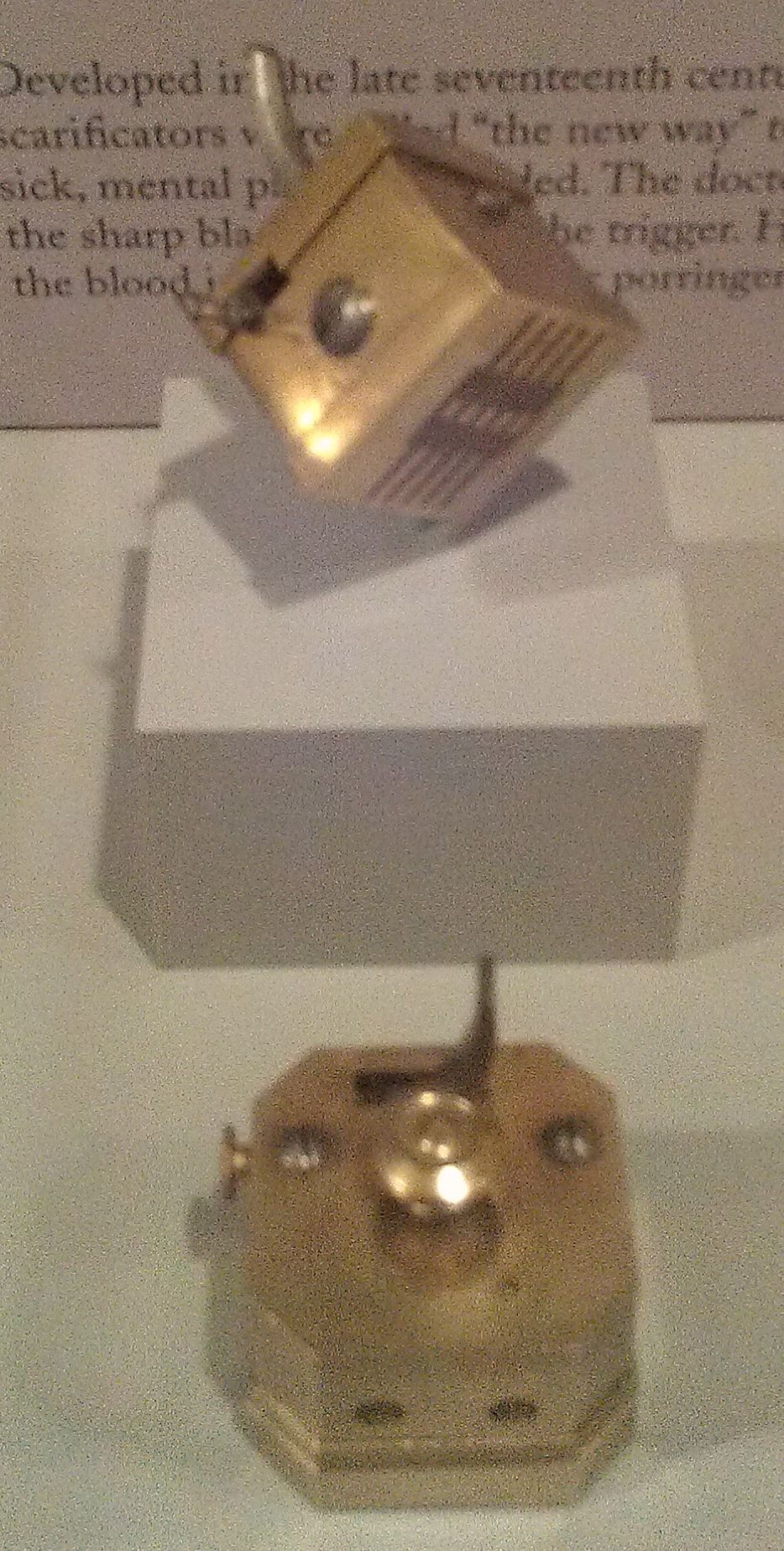Encyclopedia Dubuque
"Encyclopedia Dubuque is the online authority for all things Dubuque, written by the people who know the city best.”
Marshall Cohen—researcher and producer, CNN
Affiliated with the Local History Network of the State Historical Society of Iowa, and the Iowa Museum Association.
BLOOD-LETTING
BLOOD-LETTING. For thousands of years, physicians relied heavily on a single treatment for hysteria, heart disease and just about every other illness: bloodletting. The theory behind the practice changed often over time, but the practice itself remained much the same -- with doctors often bleeding patients until they were weak, pale and, sometimes, unconscious. (1) Bloodletting was used to treat almost every disease. One British medical text recommended bloodletting for acne, asthma, cancer, cholera, coma, convulsions, diabetes, epilepsy, gangrene, gout, herpes, indigestion, insanity, jaundice, leprosy, ophthalmia, plague, pneumonia, scurvy, smallpox, stroke, tetanus, tuberculosis, and for some one hundred other diseases. (2)
A number of different methods were employed. The most common was phlebotomy, or venesection (often called "breathing a vein"), in which blood was drawn from one or more of the larger external veins, such as those in the forearm or neck. In arteriotomy, an artery was punctured, although generally only in the temples. In scarification, the "superficial" vessels were attacked, often using a syringe, a spring-loaded lancet, or a glass cup that contained heated air, producing a vacuum within. There was also a specific bloodletting tool called a scarificator, used primarily in 19th century medicine. It has a spring-loaded mechanism with gears that snapped the blades out through slits in the front cover and back in, in a circular motion. The case was cast brass, and the mechanism and blades steel. One knife bar gear had slipped teeth, turning the blades in a different direction than those on the other bars. The withdrawal of enough blood to cause syncope (fainting) was considered beneficial, and many sessions only ended when the patient began to swoon. (3)
Though the bloodletting was often recommended by physicians, it was carried out by barbers at a time when wearing hair long and not shaving was common. (4) The red-and-white-striped pole of the barbershop, still in use today, is derived from this practice: the red represents the blood being drawn, the white represents the tourniquet used, and the pole itself represents the stick squeezed in the patient's hand to dilate the veins. Leeches could also be used and then returned to a jar of water to live until used on the next patient. (5)
The continued popularity of bloodletting was that while anatomical knowledge, surgical and diagnostic skills increased from the 17th century, the key to curing disease remained unknown. It was considered better to give any treatment than nothing at all. One of the rare photographs of bloodletting being practiced dated from 1860. (6)
As an adjective, "blood-letting" enjoyed some popularity in the post-Civil War era to describe some politicians.
---
Source:
1. Conis, Elena. "When Bleeding Was A Treatment," Los Angeles Times, June 26, 2006. Online: http://articles.latimes.com/2006/jun/26/health/he-esoterica26
2. Wikipedia-bloodletting. Online: http://www.encyclopediadubuque.org/index.php?title=BLOOD-LETTING&action=edit&redlink=1
3. Ibid.
4. "Questions and Answers," (column) Telegraph-Herald, May 28, 1911, p. 27
5. Wikipedia
6. Ibid


